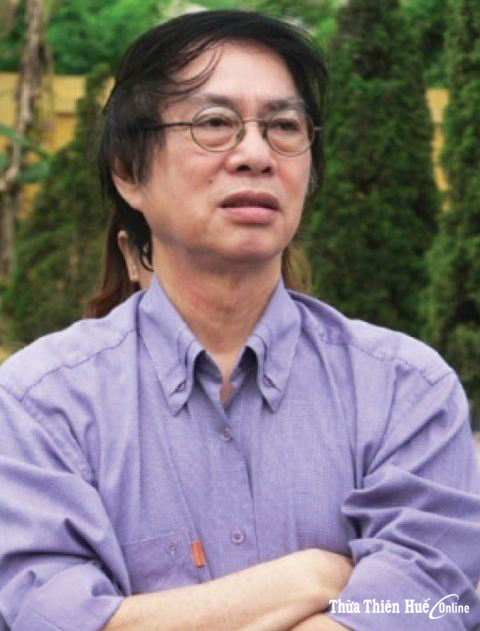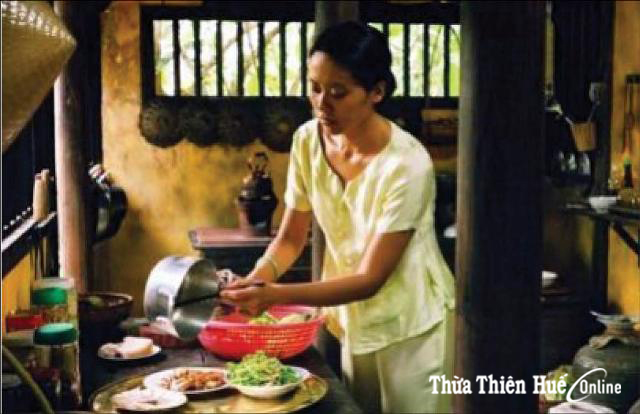A brief history of Hue cinema
The history of world cinema began on December 28, 1895 – the day when Auguste Lumière and Louis Lumière showed their films in the cellar of the Grand Café at 14 Boulevard Capucines, Paris.

Director Dang Nhat Minh
Researcher Nguyen Xuan Hoa in the study "A brief history of photography and cinema in Thua Thien Hue" said that a year later, in 1896, these same two French brothers came to Vietnam and shot a film in a village near Da Nang. A short report of Nam Ky weekly newsletter, week 83, issued on June 1, 1899, said: "Léopold Bernard (who organized the “singing-images show” published in the previous issue of 81) stayed in SaiGon a few days more, then he would go to Hue imperial city because the court required him there as they would like to see the singing images.” Thus, it can be said that Léopold Bernard was the first to bring cinematography to Hue in June 1899.
In the years 1917-1918, two film crews: Testart and Brun made four films about Hue including "Nam Giao", Nam Giao ceremony; "Mausoleums in Hue", introducing the kings’ mausoleums; "Hue, the capital of the Annam court," introducing Hue with the images of the Phu Cam river (An Cuu River), the Perfume River, the Palace, Imperial Citadel, European Quarter and the royal tombs; "Activities in the imperial court of Hue", introducing royal family’s activities, the reign of King Khai Dinh, the ministers and some rituals of the Nguyen court.
The Morin cinema is the first luxurious movie theater in Hue, offering two nights of movie screenings each week. The popular films in the 1920s were mainly French films. From 1923, the first Vietnamese film was made through the Indochine Films at Cinema (IFEC) with the movie The Tale of Kieu (Kim Van Kieu).
After the establishment of the Morin cinema, Hue also had Richard theater on Middle Lane street (now Phan Dang Luu street). In July 1951, Nguyen Van Yen took over the Morin Hotel after it was transferred to him by this family, the Morin Cinema was changed into the Nguyen Van Yen cinema; the Richard theater’s owner was then changed and became the Vietnamese movie theater. Later on, on Tran Hung Dao Street was the Tan Tan cinema; on the other side of Gia Hoi bridge, on Gia Hoi street (now Chi Lang), there were two cinemas Chau Tinh, Gia Hoi (later changed to Khai Hoan, and then Hoan My); in the early 1960s, on Hung Dao street, there was Hung Dao Theater.
After the unification of the country, under the subsidy system, the Hung Dao Theater changed its function into the Hue Cultural House. The cinemas of Tan Tan, Chau Tinh, Gia Hoi were reorganized into Hue Film Screening Company.
After 1989, Hue Film Screening Company was merged with the Fafim system in the locality, organized into Thua Thien Hue Film Screening and Distribution Company. However, cinema activities were not much invested; additionally, there were difficulties such as limited sources of films, outdated business methods, deteriorating movie theaters. Since the development of the video, TV technology, internet, the cinema activities have stalled.
Great directors of Hue
In the history of Vietnamese cinema, Hue has made many excellent directors, contributing greatly to the cinema of the country.

Movie scene from "Moon at the bottom of the well"
Director Mai Loc is considered the founder of Vietnam revolutionary cinema. In the early days of the anti-French colonialist war, director Mai Loc, together with cameraman Jiang Me made his first documentary, "The Battle of Moc Hoa," a film regarded as a rare model of warfare film in the Vietnam revolutionary cinema. In 1952, he made the documentary named "The Northwest Victory". This film was claimed to be the great stride of Vietnamese documentary film. During the Dien Bien Phu Campaign, he and director Phan Van Khoa and writer Nguyen Dinh Thi were assigned to work with director Karmen to produce the first color documentary film "Vietnam on the Road to Victory".
Director Le Hoang Hoa, in addition to the movie "The Church Steeple", is also famous for "The Sign of Enmity on the Wild Horse’s Back". Thanks to playing the role of "Hoang Guitar", Tran Quang was chosen to win the best male actor of the South at that time. Le Hoang Hoa is also the first director to do the horror film "The Ghost of the Hua Family". Director Le Hoang Hoa is remembered most as an illustrious director with his great 8-episode series named “Play Your Cards” (Van Bai Lat Ngua).
Director Dang Nhat Minh is a well-known name with classic films: The Girl on the River, Nostalgia for Countryland, When the Tenth Month Comes, Hanoi Winter 1946, the Season of Guavas, Don’t Burn… In addition to the noble titles awarded by the State, in 2010, director Dang Nhat Minh was honored by the American Academy of Motion Picture Arts and Sciences for his dedication to Vietnam Cinema.
Director Nguyen Vinh Son is the director of two famous films: "Severe Childhood" and "Moon at the Bottom of the Well." Among them, "Moon at the Bottom of the Well" was awarded the Best Asian Director Award by the Image India Film Festival in Madrid, Spain ... Hue also has other big names such as Ha Thuc Can, Le Mong Hoang ...
Dreaming about the Hue film studio
Currently, the CineStar Hue Modern Cinema project is underway. The scale of the project is eight movie theaters with a total of about 1,724 seats, total investment capital is 150 billion VND. It is expected that by the end of 2018 the project will be completed and put into operation. That would be a push for Hue cinema.
However, many people still dream of Hue cinema taking off as a big film studio. Many filmmakers have commented that Hue is an ideal space for a film studio, many classics were made here. Hue was selected by many filmmakers to shoot outdoors scenes, such as Hai Ninh's "Long Tri Night", which was made in 1989, exploiting the Hue Palace to re-create the images of King Le and Lord Trinh; Long Van's film "See You in Saigon" completed in 1990, re-creating the time when Nguyen Tat Thanh (Uncle Ho) lived in Hue. Hue is also the place where they chose to film three famous movies: “The Girl on the River” directed by Dang Nhat Minh in 1987," Moon at the Bottom of the Well" directed by Vinh Son in 2007 and "Indochine" directed by Régis Wargnier and released in 1992 ...
With the history and development of Hue cinema in the flow of Vietnamese cinema, the dream of Hue film studio is not far away or illusory.
Story, photos: Ho Hoang Thao